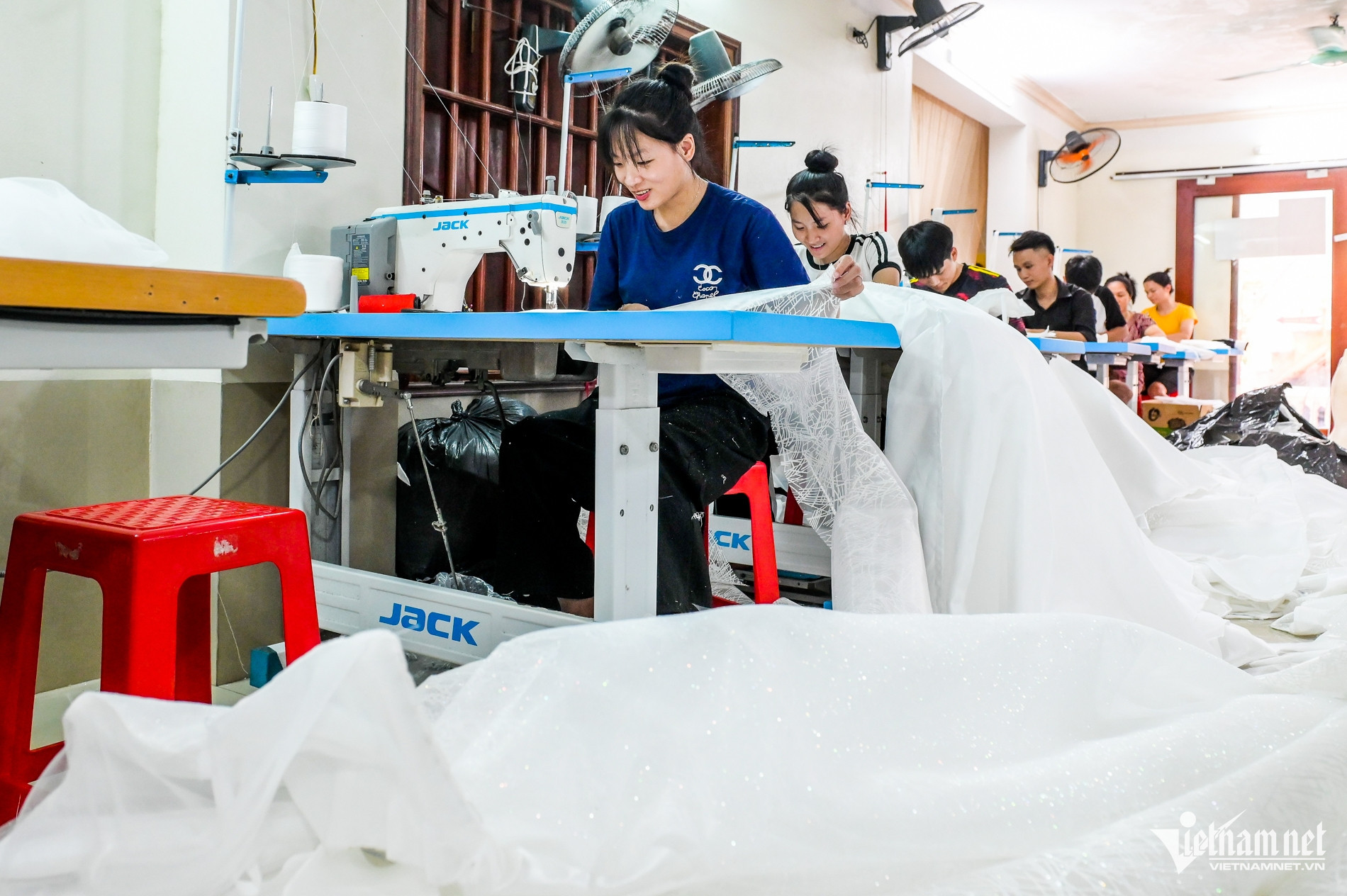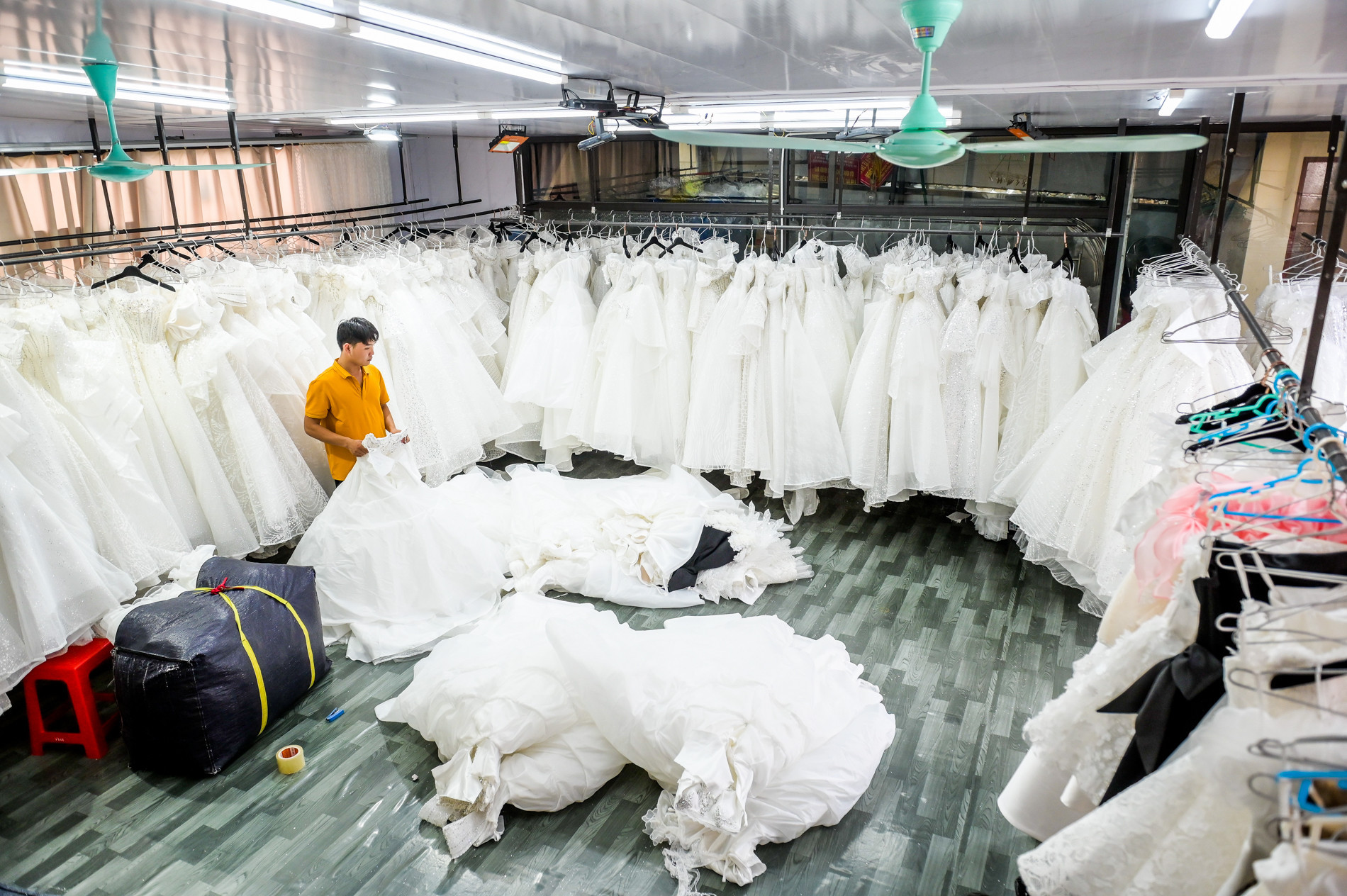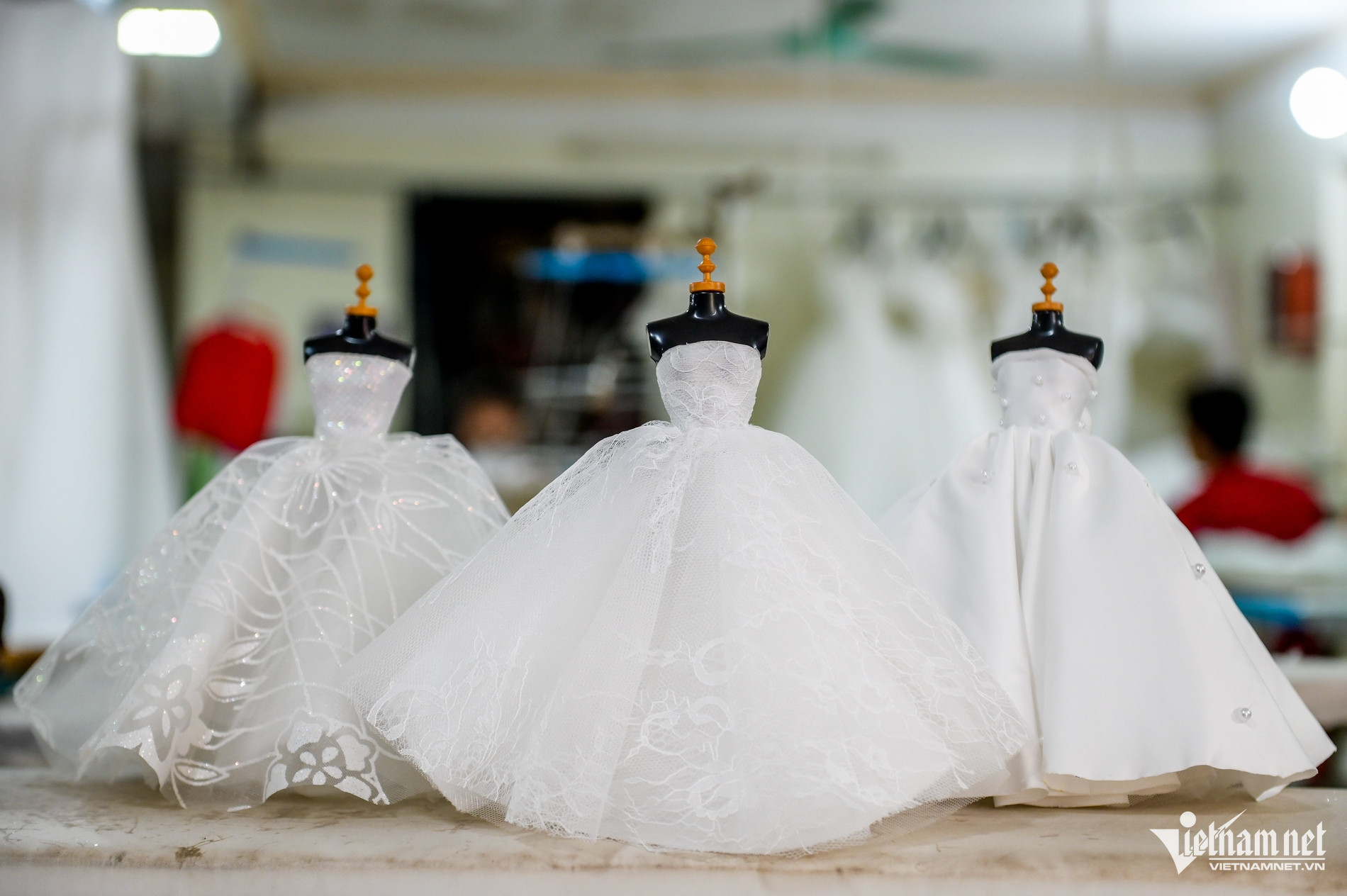With 280 wedding gown production facilities employing thousands of workers, Giao Lac Commune in Nam Dinh Province has become a leading center for wedding gown manufacturing in Vietnam, bringing prosperity to the region.
Thriving thanks to wedding gown tailoring

Like many coastal areas, Giao Lac Commune in Giao Thuy District, Nam Dinh, once relied on agriculture and aquaculture for livelihoods.
In the early 2000s, wedding gown tailoring emerged as a small-scale industry. Over the past decade, growing market demand has turned it into the commune’s primary economic driver.
Do Thi Lan, owner of Lan Thuong Wedding Gowns in Dai Dong Village, shared that her family was among the first in Giao Lac to take up the trade, which she has been involved in for over 20 years.
Initially, her workshop employed only a few people, but today it has grown to include around 50 workers.
Lan recounted that in the early days, orders were sparse, requiring her to travel extensively across provinces to promote her gowns. Over time, she established a steady customer base, and orders began to flow consistently.
Customers provide sample designs, and her workshop creates gowns tailored to their specifications. Prices vary based on materials and complexity, with high-end designs requiring meticulous craftsmanship.
Currently, her workshop produces 50–60 gowns daily, with monthly sales reaching 1,500 pieces. Prices range from 1 to 5 million VND ($40–$200 USD) or higher, depending on the design.
This steady flow of orders ensures stable income for her workers.
“Each worker earns between 7 and 10 million VND ($285–$407 USD) per month. Some take work home in the evenings, earning up to 20 million VND ($814 USD) monthly. Skilled designers and technicians earn even more,” Lan said.
A growing industry transforming lives

By her sewing machine, worker Mai Thu Huyen smiled and shared her story: “I’ve been sewing wedding gowns since 2009. Before this job, my family relied solely on farming, and our financial situation was dire. This trade has transformed our lives.”
The additional income from tailoring has significantly improved her family’s finances, allowing her to continue farming while enjoying a stable income.
Her neighbors have experienced similar success, as the trade has uplifted the entire community.
A few hundred meters from Lan’s facility, Trinh Thi Quyen runs another wedding gown workshop employing 25 workers.
On average, Quyen’s facility produces over 1,000 gowns monthly.
Creating a wedding gown involves numerous steps, from conceptualizing and cutting fabric to sewing, decorating, and embellishing with flowers and beads.

Each worker specializes in a specific stage, but the design process is the most critical, as it determines whether the gown will appeal to customers.
As such, either the owner or a skilled designer oversees this step.
Each gown undergoes meticulous quality checks before delivery. This attention to detail, coupled with reasonable prices, has helped Giao Lac’s wedding gowns gain popularity across Vietnam and even abroad.
Today, Giao Lac boasts around 280 wedding gown facilities employing over 2,500 workers, earning it the title of Vietnam’s largest wedding gown production hub.
The industry has brought material and cultural enrichment to Giao Lac. Roads are now paved, and modern homes are a common sight, with many families building spacious, elegant residences.
The local government actively supports the trade, assisting in waste management and encouraging sustainable practices.
To ensure the trade’s longevity, authorities are guiding facilities toward forming cooperatives or businesses for more structured growth, fostering collaboration and advancing production standards.
Trong Tung